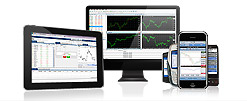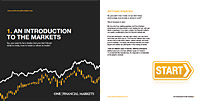

Trading expectations and volatility
6th August 2019
You can also define your trading expectation ratio by taking your total expectations and dividing it by the average loss. This will tell you how volatile your strategy is on average. The higher the trading expectations as a ratio to the average loss, the more robust the trading strategy.
Expectancy requires a trading strategy
One of the benefits of calculating trading expectancy is that it forces you to define a strategy. The strategy goes well beyond the number of trades that you expect to win or lose. You need to specifically define your risk management and stick to the plan to reach your trade expectancy.
Regardless if you are planning to use an automated strategy or a discretionary strategy, you need to plot out how much you plan to win on average on each trade, and how much you expect to lose on each trade.
The best strategies start with determining risk. Once you decide the most you are willing to lose on a trade or strategy, you can then work out how much you need to make to generate a successful trading strategy.
Evaluate the largest drawdown
When you look at trading expectancy, you evaluate the average win and average loss per trade. One problem with only evaluating these metrics is that you could miss the elephant in the room. The average loss per trade could be littered with many small losses and one or two very large losses. If your expectations are based on average losses, and the first two losses you face are outsized losses, your ability to continue to execute the strategy could be curtailed. Make sure you measure the largest loss relative to the average loss before you start executing a strategy.
Summary
Your trading expectancy evaluates whether a strategy will be a winner or a loser. You need to make some assumptions about the average win or average loss when determining your trading expectancy. You want to measure trading expectancy over time and evaluate the largest loss before you begin to execute a trading strategy.
Begin trading today! Create an account by completing our form
Privacy Notice
At One Financial Markets we are committed to safeguarding your privacy.
Please see our Privacy Policy for details about what information is collected from you and why it is collected. We do not sell your information or use it other than as described in the Policy.
Please note that it is in our legitimate business interest to send you certain marketing emails from time to time. However, if you would prefer not to receive these you can opt-out by ticking the box below.
Alternatively, you can use the unsubscribe link at the bottom of the Demo account confirmation email or any subsequent emails we send.
By completing the form and downloading the platform you agree with the use of your personal information as detailed in the Policy.






